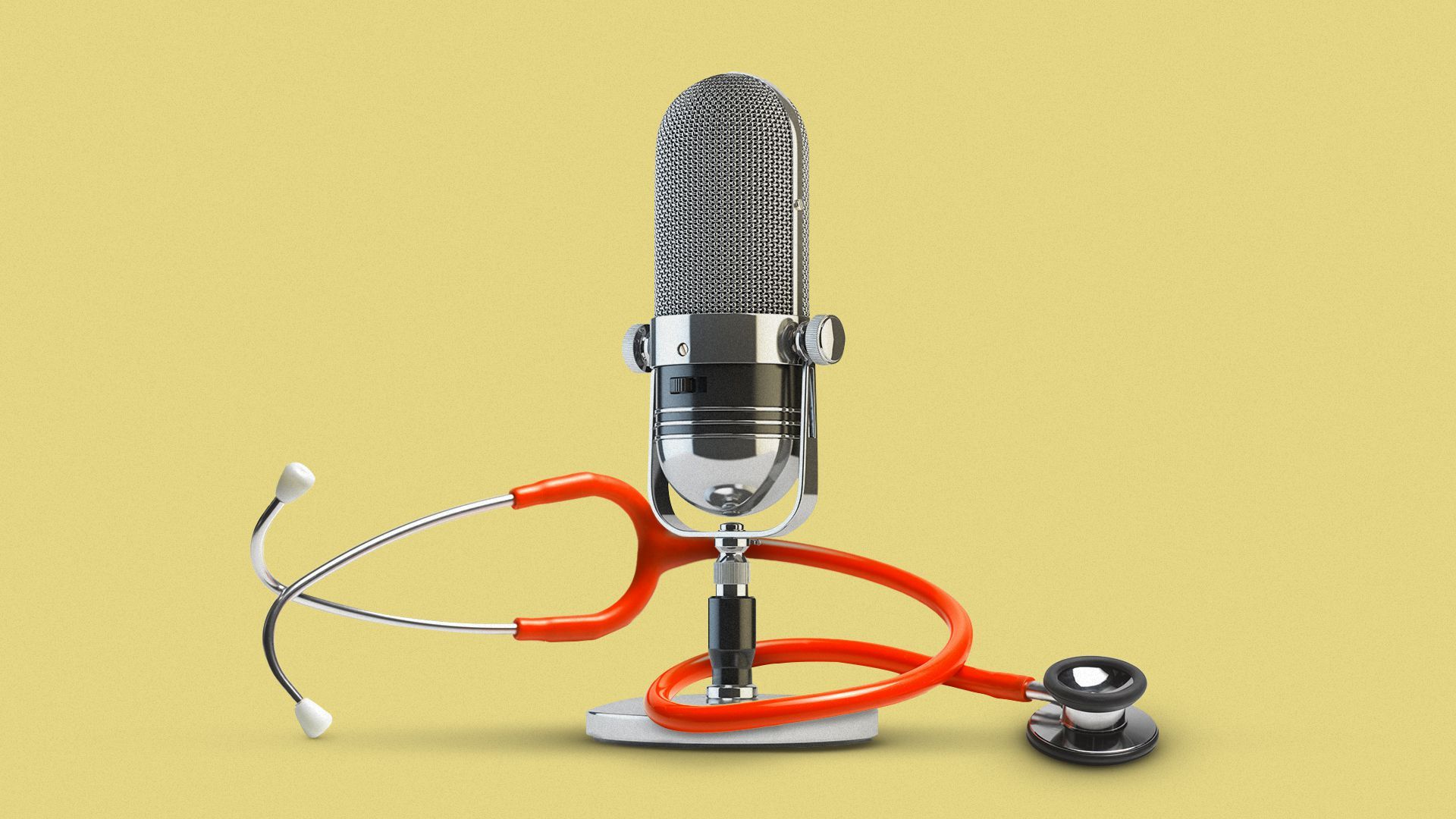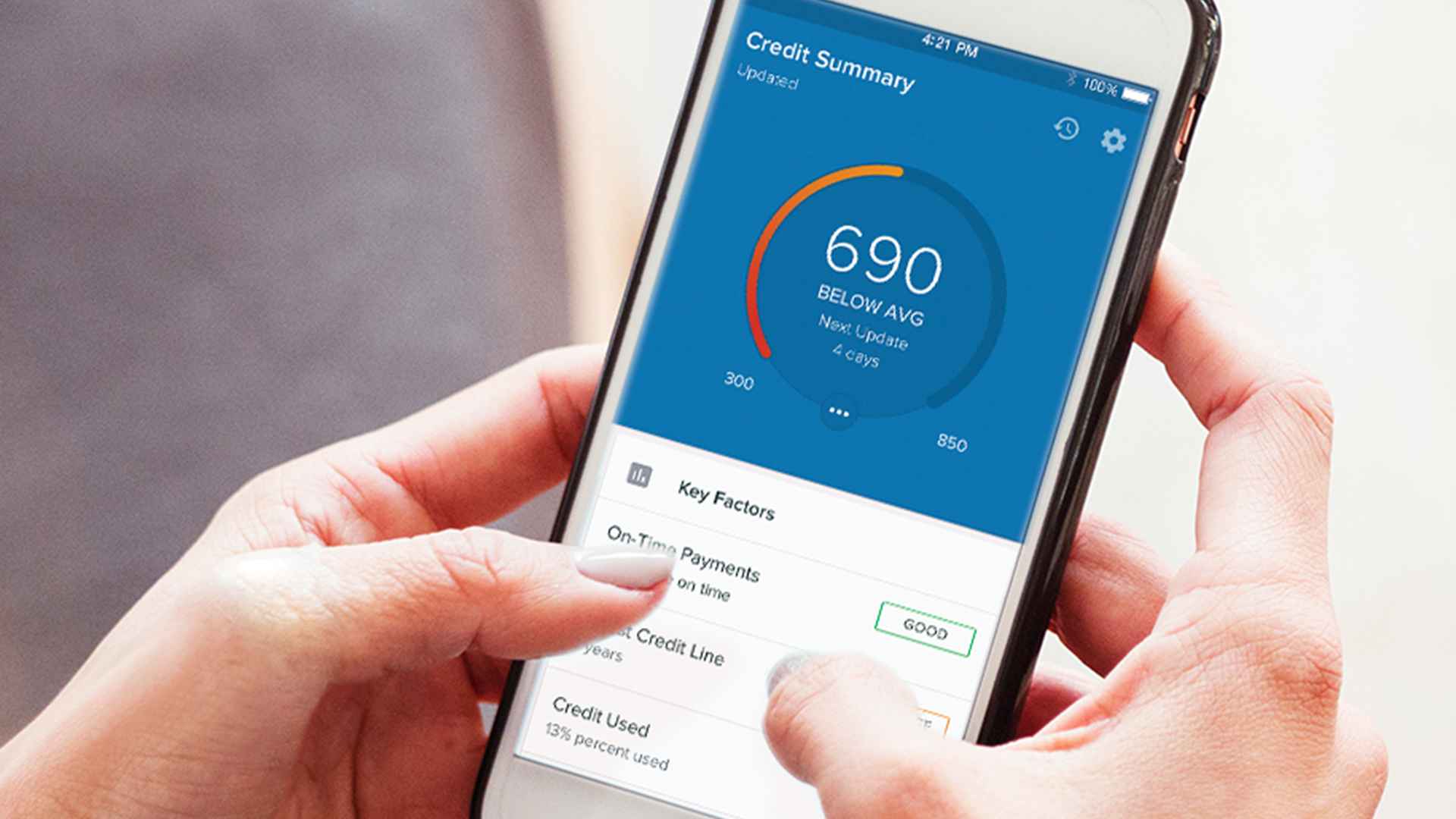| |
| |
| |
| Presented By Capital One |
| |
| Axios What's Next |
| By Jennifer A. Kingson, Joann Muller and Alex Fitzpatrick · Oct 20, 2022 |
| New AI can examine your voice for signs of depression and other ailments, Jennifer reports today — but it's raising exactly the kinds of concerns you'd expect. - Join Axios' Joe Guillen and Joann Muller today at 12:30 p.m. ET for a virtual event exploring the next steps in the EV transition. Register here.
Today's newsletter is 1,203 words ... 4½ minutes. |
| |
| |
| 1 big thing: Voice-scanning AI detects health woes |
 |
|
| Illustration: Natalie Peeples/Axios |
| |
| Software that analyzes snippets of your speech to identify mental health problems is rapidly making its way into call centers, medical clinics and telehealth platforms, Jennifer A. Kingson reports. Why it matters: Proponents of "voice biomarker" technology say the underlying artificial intelligence is good enough to recognize depression, anxiety and a host of other maladies. - But its growing ubiquity raises privacy concerns similar to those brought about by facial recognition.
Driving the news: Hospitals and insurance companies are installing voice biomarker software, so that — with patients' permission — they can identify in real time if someone they're chatting with may be anxious or depressed, and refer them for help. - The technology is also making inroads in doctors' offices, clinical trials and senior centers.
- Employers are looking to use voice biomarkers on their employee help lines.
- Companies that sell the technology — such as Kintsugi, Winterlight Labs, Ellipsis Health and Sonde Health — are raising money, racking up clients and pointing to growing clinical evidence of its efficacy.
Where it stands: A scant but growing number of scientific studies support claims that voice biomarkers can help screen for everything from depression to cardiovascular problems to respiratory ailments such as COVID-19, asthma and COPD. How it works: Vocal biomarker systems analyze how you talk — prosody, intonation, pitch, etc. — but not what you say. - Your voice sample is run through a machine-learning model and compared against a database of anonymized voices.
What they're saying: "From as little as 20 seconds of free-form speech, we're able to detect with 80% accuracy if somebody is struggling with depression or anxiety," Kintsugi CEO Grace Chang tells Axios. Where it stands: Kinsugi is seeking Food and Drug Administration clearance for its product to become a recognized diagnostic tool. - Sonde Health positions its system differently. "We are an early warning system — we are not a diagnostic device," Sonde CEO David Liu tells Axios.
- Sonde's technology — which screens for depression, anxiety and respiratory problems — is being integrated into hearing aids and tested by the Cognitive Behavior Institute.
Yes, but: Skepticism and ethical questions surround voice biomarker tech, which observers describe as promising but not foolproof — and ripe for potential misuse. - "There is still a long way to go before AI-powered vocal biomarkers can be endorsed by the clinical community," reads an editorial published by medical journal The Lancet.
- "Better ethical and technical standards are required for this research to fully realize the potential for vocal biomarkers in the early detection of disease."
- One risk is that the systems "may increase systemic biases towards people from specific regions, backgrounds, or with a specific accent," according to a review in the journal Digital Biomarkers.
The bottom line: The zeal of Big Pharma, insurance and health care companies will likely propel voice biomarker tech forward, and its early detection powers could prove helpful in diagnosing myriad conditions — if the related efficacy and privacy concerns are kept in check. Share this story. |
    |
| |
| |
| 2. The remote work baby boom |
 |
|
| Illustration: Natalie Peeples/Axios |
| |
| Remote work likely contributed to a mini-baby boom among U.S. women, according to a working paper published this week, Axios' Emily Peck reports. Why it matters: Economists predicted a crash in birth rates at the outset of the pandemic. Instead, the quick economic recovery and the rise of remote work may have changed the trajectory, the paper's authors say. By the numbers: The CDC previously found a small increase in 2021 birth rates. But the researchers of the new paper dug deeper. - They were able to further parse new restricted-use CDC microdata and look at births to U.S.-born mothers, compared with births to foreign-born mothers.
- They found that the birth rate for U.S. mothers increased by 6.2% relative to the 2015-2019 trend line — and that the pandemic led to a net increase in births for U.S.-born mothers of around 46,000 children.
- They also discovered that a widely publicized drop in fertility rates in 2020 was largely due to a sharp decline in births to foreign-born women, who were blocked from entering the country.
Yes, but: Another explanation could be that women had a harder time accessing abortion care during the pandemic. Be smart: College-educated women saw their financial prospects soar in 2021 and the back half of 2020, thanks to the rising value of the stock and housing markets — making it a good time to have a baby, economically at least. - Much of that cohort was able to work from home, which gave parents more time to deal with the demands that pregnancy and a new baby bring.
What to watch: The researchers also looked at birth data from California in 2022 and found that the uptick there has continued, suggesting the pandemic changed long-term fertility trends. Share this story. |
    |
| |
| |
| 3. Ads really are everywhere now |
 |
|
| Illustration: Brendan Lynch/Axios |
| |
| Any moment you look at a screen is now a moment that can be filled with advertising, Axios' Sara Fischer and Hope King write. Driving the news: Uber said Wednesday that it plans to start putting ads in its ride-hailing app. Ads had been mostly limited to the company's Uber Eats delivery app. Why it matters: Smartphones, e-commerce platforms and connected devices — including smart TVs in hotel rooms — have all made it possible for any business, from networking apps to grocers and ride-hailing companies, to target customers with digital ads. - U.S. ad revenues this year are expected to surpass $300 billion, a record, thanks in part to a slew of new companies jumping into the ad business.
Read the rest. |
    |
| |
| |
| A message from Capital One |
| What it means to be credit invisible |
| |
 |
| |
| A low or nonexistent credit score makes it hard, even impossible, to achieve long-term financial well-being. The solution: Capital One's Credit Building Program connects people across the country to products and resources to help them to save money, build credit and manage debt. Learn more. |
| |
| |
| 4. Saudi Arabia becomes architects' "Shangri-La" |
 |
|
| A rendering of a planned marine life institute on Saudi Arabia's Red Sea coast. Image courtesy of Foster + Partners |
| |
| Saudi Arabia is emerging as a haven for architects to "test their wildest and wackiest ideas," per a fascinating Wall Street Journal story. What's happening: Crown Prince Mohammed bin Salman is sparing no expense in his mission of turning the kingdom into the world's most-visited country. - That's translating into huge checks for architects and other designers, who are being invited to create all sorts of tourism draws.
Bin Salman's most ambitious — some would say outlandish — project is Neom, a $500 billion effort to erect a futuristic urban oasis in the desert, starting with a 75-mile-long "linear city" called The Line. - But he's also funding lots of smaller-scale projects, per the WSJ, including...
- "An airport designed to resemble a desert mirage. An island shaped like a dolphin, with coral-reef buildings. An offshore oil platform revamped into an amusement park, with a roller coaster and bungee jumping."
Yes, but: The 2018 murder of Washington Post journalist Jamal Khashoggi inside Saudi Arabia's consulate in Istanbul may make some designers think twice about doing work in the country. |
    |
| |
| |
| 5. One fun thing: Pillars of Creation, Webb-style |
 |
|
| Photo courtesy of NASA, ESA, CSA, STScI; J. DePasquale, A. Koekemoer, A. Pagan (STScI) |
| |
| The James Webb Space Telescope recently took aim at the Pillars of Creation — a "star nursery" that found a place in astronomy nerds' hearts after the Hubble Space Telescope captured it in 1995. "Newly formed protostars are the scene-stealers in this Near-Infrared Camera image," reads a European Space Agency description of the Webb picture. - "These are the bright red orbs that typically have diffraction spikes and lie outside one of the dusty pillars."
- "When knots with sufficient mass form within the pillars of gas and dust, they begin to collapse under their own gravity, slowly heat up, and eventually form new stars."
The absolutely stunning high-res version — available here — is worth the click. |
    |
| |
| |
| A message from Capital One |
| Millions of Americans are being shut out of opportunities |
| |
 |
| |
| Good credit history may improve a person's ability to: - Borrow money.
- Get a credit card.
- Receive a mortgage or auto loan.
- Rent an apartment.
Okay, but: About 28 million Americans are credit invisible. Another 21 million are unscorable. See how Capital One is helping. |
| |
| Big thanks to What's Next copy editor Amy Stern. Was this email forwarded to you? Get your daily dose of What's Next by signing up here for our free newsletter. |
 | | Are you a fan of this email format? It's called Smart Brevity®. Over 300 orgs use it — in a tool called Axios HQ — to drive productivity with clearer workplace communications. | | |










No comments:
Post a Comment